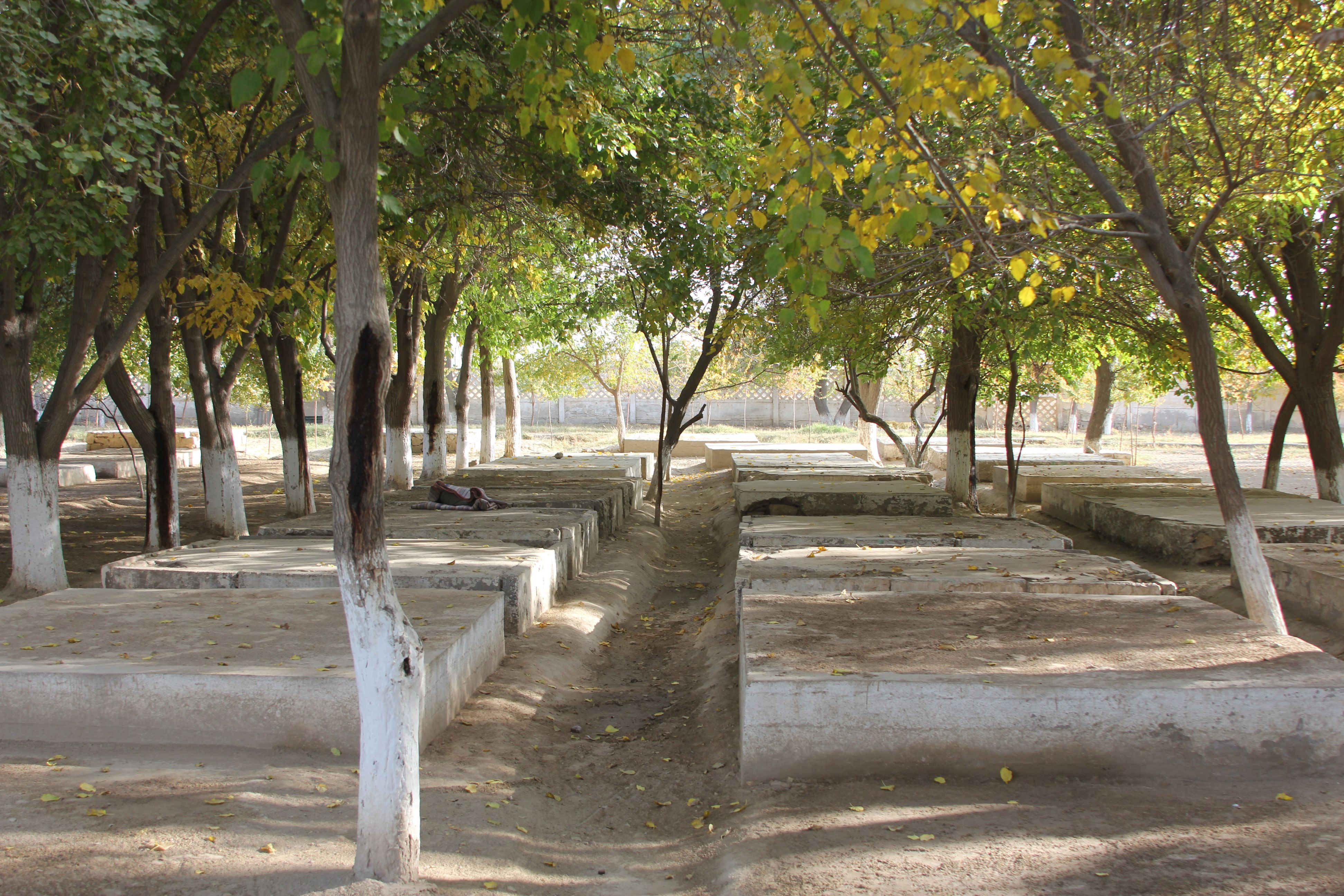Chiluchor Chashma is one of the remarkable freshwater springs in the Khatlon province. It is located on the right bank of the Kofarnihon river and is 12 kilometers to the west of Shahritus district. This is a well-known spring, and mausoleum in Nosiri Khusrav district of Khatlon region. The site is located at 230 km south of Dushanbe. Geographically the spring is within Beshkent valley, which was a lifeless steppe in the past. The valley turned into a flourishing land with cotton and wheat farms, and fruit garden when the Soviet constructed an irrigation channel there.

History of the Area
According to the findings of the Soviet archaeologist the site of Chiluchor Chashma, dates back to the Mesolithic period. Arab chronicler visiting Central Asia in 12th century noted about the existence of a well-known source in Qubodiyon, which had a healing water.
Russian and Soviet historian noted that this spring was one of most reserved and visited area in the Qabodian region. It was a flourishing oasis in the Bishkent valley. The families of religious leaders such khojas and shaykhs have settled around the site, received gifts from the numerous pilgrims. They have also served as tax collectors for the local and regional rulers. The descendant of these shaykh is serving as the keeper of the site, and custodian of the nearby shrine.

A legend is spread among the local people about the appearance of this spring. The legend is a about a mythical figure Bobo Qambar, who was the horseman, and the head of the stable of Hazrat Ali, the fourth rightly guided caliph of Islam, the son in-law of the Prophet Muhammad. Bobo Qambar was wounded in Badakhshan during the battle with the infidels. While suffering from the pain he dreamt of a place with Forty-Four Springs. However, none among the troops knew the location of the Forty-Four Springs. To find these springs the army of Hazrat Ali divided themselves into groups to search the springs.
One of this group reached the province Qubodiyon and found a small oasis with forty-four springs. The body of Bobo Qambar was buried there, and Hazrati Ali came to pray on his grave. Since that time the grave of Bobo Qambar became a place of worship and pilgrimage from near and far places. Another popular story about the origin of these springs is that Ali came to preach Islam to this valley, but the nearby river dried up. Then Ali cursed the river and named it Kafirnihan (the place where unbeliever hide). Ali reached the present place of Chilu Chorchashma and prayed to God to send water to his troops. He struck the ground with his hands and five springs of water came out of the place of Hazrat Ali’s fingers.
Natural Features of the Site
Totally there are forty-four springs in the site. Seventeen of these springs have therapeutic and healing features/ The first group of spring with healing features are called Muyin springs. Traditionally, people cut and throw the hair of their children near these springs and wash them. They believe that diseases such as headache would disappear after this action. on their beliefs and convictions and cut them here with good intentions.
On the edge of this spring there is an old willow tree, which is believed to have lived for more than a thousand year. It is mentioned that in 1980 the tree was listed in the Guinness Book of Records.
The second group include springs, which are called nasal springs. People with nosebleeds use it. These springs are a great source of water. The third group includes four springs, which are used for treating, flu in respiratory and other human organs. The fourth group of spring are used for bone diseases. The fifth group of the springs used to treat malaria sufferers. Despite the fact that the springs are located at a distance of 20-25 cm from each other, they have distinct characteristics.

Scientists have analyzed these springs separately and proved that one is useful for osteoporosis and the other for malaria. A re-examination using 144 glass-test tubes determined exactly that the property of water in these springs actually differs from each other. The sixth group of the springs (include 4 springs) are good for digestive purposes. The other two springs offer cure for high blood pressure and headaches. Those with high blood pressure use it. Another spring is beneficial for spores (whites) and vetligo disease (body spots). This is unusual water and will heat up to 49 degrees from January 11 to 29. Constantly, every year in January the spring dries up and reopens in May.
The other four springs are called (murod) goal. Local people take stones from this spring for a long time. When they reach the goal, they put the stone back in its place. Thus, the five large springs which come out from the hill, in turn split into 39 smaller ones. The water of the springs forms a channel 12-13 meters wide, in which “sacred” fish (various species of the Marinka genus), as well as trout, live. The spring is full of different spishes of fish.
Gallery








Travelling to the Site
Chilu Chorchashma can be easily reached through the main highway of Dushanbe-Shahritus. It would take a half-hour drive for a minibus from Shahritus. Usually the mini-bus travels to the site several times a day, and frequently on weekends. Taxis can be also hired from Bokhtar directly to the site.




















